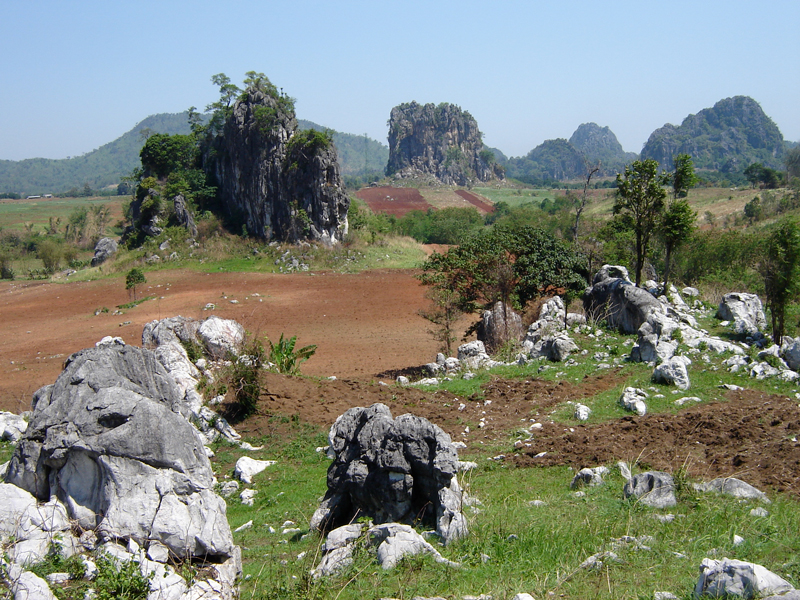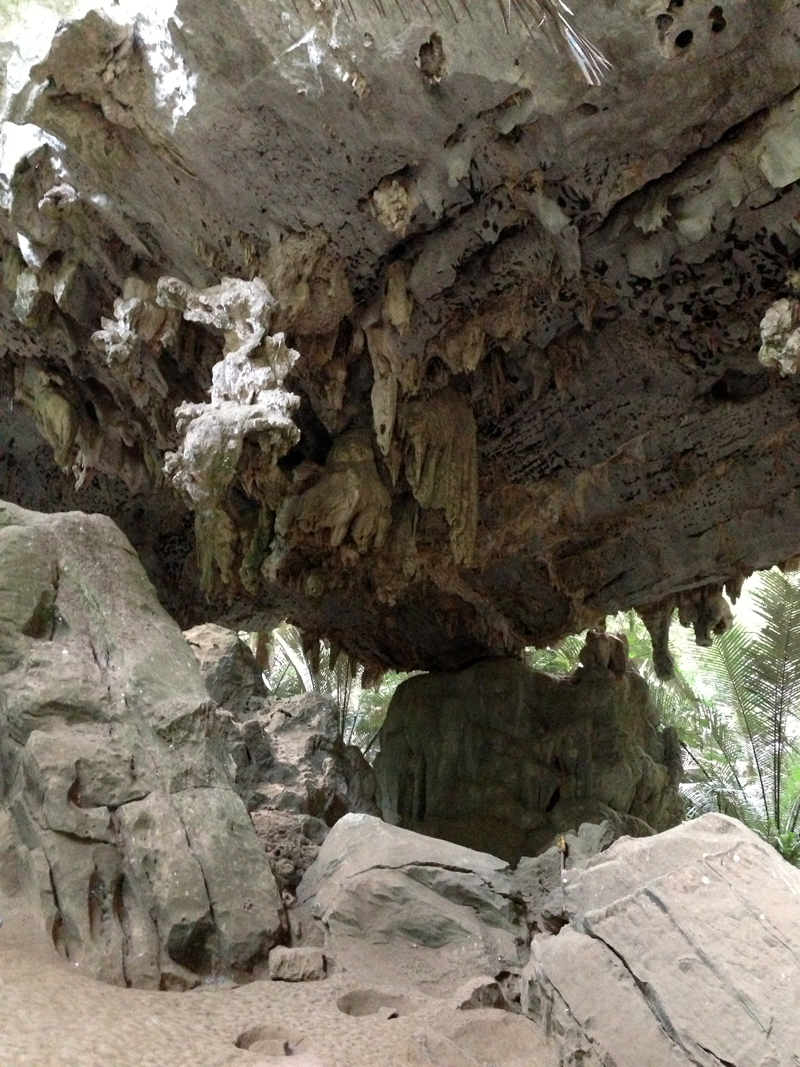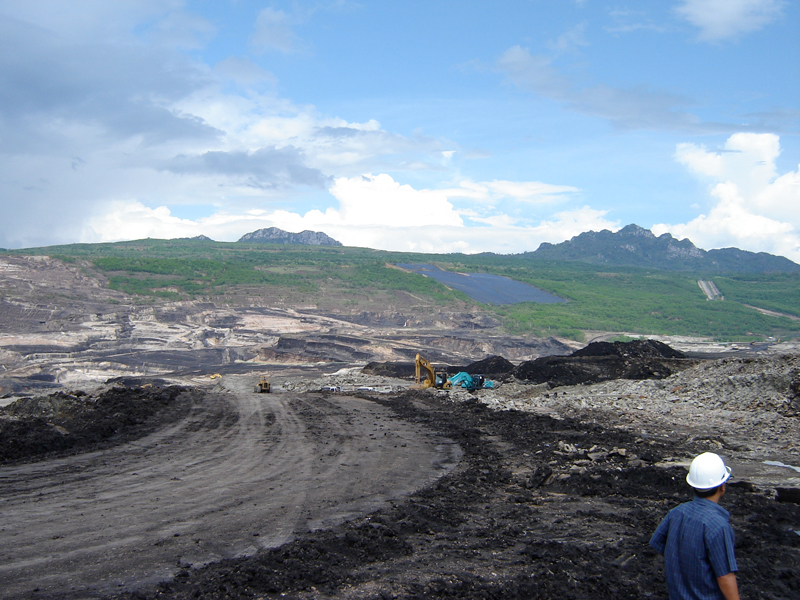The recent dramatic rescue of 11 young soccer players and their coach from a cave in Thailand was very moving, and it made one aware of just how complex the karst systems are. Welcome to an interview with Sarawute Chantraprasert, a geologist and AAPG member, who coincidentally has conducted field work and worked in Chiang Mai, the very same region where the rescue took place.
The recent dramatic rescue of 11 young soccer players and their coach from a cave in Thailand was very moving, and it made one aware of just how complex the karst systems are. Welcome to an interview with Sarawute Chantraprasert, a geologist and AAPG member, who coincidentally has conducted field work and worked in Chiang Mai, the very same region where the rescue took place.

Permian limestone in Loei, northeastern Thailand. Discontinuous karst topography here resulted from erosion of limestone intercalated with clastic and volcaniclastic material.
What is your name and your background?
My name is Sarawute Chantraprasert. I am a senior geologist at PTTEP and specialised in structural geology. Prior to joining PTTEP I was a lecturer at Chiang Mai University in northern Thailand, where I had opportunities to gather experience on the geology of the region, particularly from field work.
How did you become interested in geology?
I was initially into the field-work aspect of geology. I really liked the way we could to go out to learn and practice geology in the field.
In general, where are the main producing areas in Thailand?
We have the larger gas and oil fields in the Gulf of Thailand. There is also a big oil field in central Thailand. These are all situated in Tertiary rift basins and the principal petroleum systems involve non-marine depositional environments (i.e. fluvial, deltaic, lacustrine).
What are some of the new directions in oil exploration in Thailand?

Inside a sinkhole or collapsed cave in Uthai Thani, central Thailand. Cave floor to ceiling is about 5 meters. The Permian limestone here was uplifted by strike-slip motion in the Tertiary and then subjected to karstification by groundwater. Similar features were interpreted in the subsurface of a gas field in northeastern Thailand.
Although new-field exploration opportunity is limited, there is a number of near-field opportunities and new plays that have been underexplored, in both the Tertiary basins and older basins in the northeastern part of Thailand. We are also concentrated on development techniques in mature fields with complicated geology.
The cave system where the recent rescue took place is really amazing. Could you talk to us a little about it?
The cave is part of the karst system in a Carboniferous limestone unit. Its association with surrounding rock units led to the interpretation of the limestone being part of a Palaeozoic accretionary complex that was later intruded by Triassic granite. These rocks form the basement that was uplifted along a normal fault at the western boundary of the Tertiary Mae Sai Basin. Quaternary regional uplift enhanced the exposure of the limestone and that's when the karst system was developed. I think the architecture of the caves was controlled by both the original carbonate facies distribution as well as fracture and fault systems. Apart from being cut by the younger Tertiary normal and strike-slip faults, the limestone could have also been affected by older hydrothermal intrusion and alteration related to Triassic granite.
What is unique about karst systems in Thailand?

Disharmonic folding of a limestone quarry in Saraburi, central Thailand. Some of the limestone in this region were intruded by younger igneous bodies with related hydrothermal alteration.
Many limestones in Thailand are often associated with granites of various ages from Mesozic to Tertiary. Hydrothermal alteration related to these granites could either improve or destroy the primary permeability and flow pathways within the limestones. The processes affected how the karst systems were developed as well as qualities of the limestones as petroleum reservoirs.
How does understanding the karst systems in Thailand help us with carbonate reservoirs?

The Mae Moh coal mine in a Tertiary rift basin in northern Thailand. On the skyline is the Triassic limestone basement that was uplifted by the normal fault along the basin boundary.
We have certainly applied our understanding of exposed limestones and associated karst in petroleum exploration and production. There is an offshore oil field in a Tertiary basin with a reservoir in Permian karstified limestone. There are also two gas fields in northeastern Thailand with limestone reservoirs, where some of the gas has been produced from karst features identified in seismic data.
Would you like to recommend any books?
For geology of Thailand, I recommend 'The Geology of Thailand' a Geological Society London Special Publication (ISBN: 978-1-86239-319-6) that came out in 2011. There are very good chapters on the carbonate sedimentary rocks and petroleum geology of Thailand.